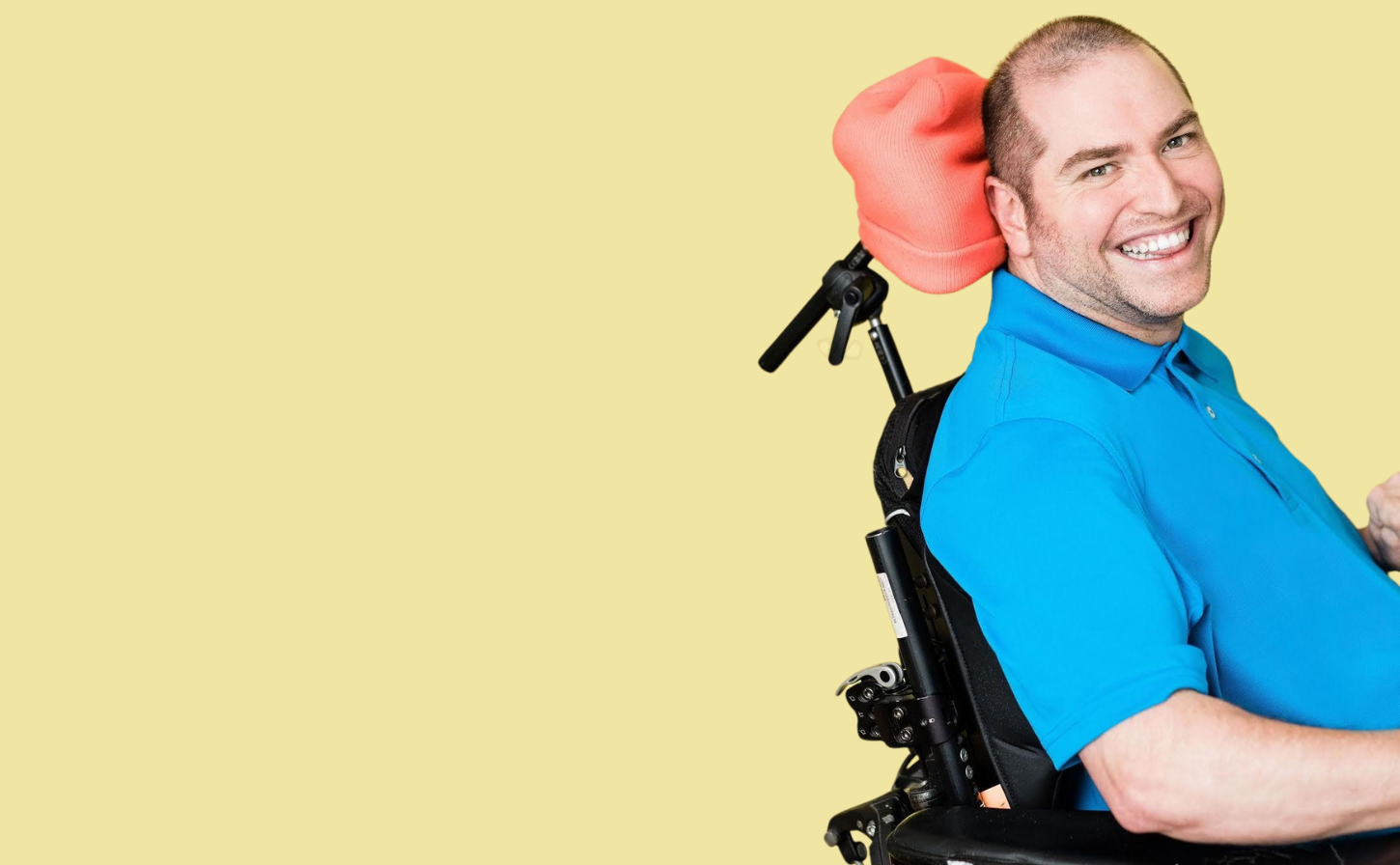Disability Grief: It’s a Thing

Subscribe to Catalyst
Subscribe to get our magazine delivered right to your inbox
Related Articles
Related Articles
When I scroll through social media in the morning, groggily reaching for my phone an hour before my attendant care worker is scheduled to come and wake me up, I am almost always hit with some type of disability meme or post. They usually come in two flavours: one about how disabled people can do anything they put their minds to, or how the only disability that we have in life is a bad attitude, next to a picture of a disabled person defying the odds by scaling a mountain, skydiving, or something like that.
The second type of meme or post that I usually encounter is a magazine article detailing a beautiful person’s tragic accident that left them “wheelchair bound,” but “that doesn’t stop them from living their best life,” or something like that. These all-too-common representations in disability media leave us with very narrow views of disability. You either overcome disability and morph into a heroic figure, or you turn a tragic story into an uplifting one for others to draw out inspiration.
Not your tragic hero
We don’t only see these depictions in the media, they happen in real life as well. I can’t count on one hand the number of times that I have been approached by someone and told with their furrowed concerned brow, ‘I don’t know, if I were you, I think I might just kill myself,’ or the patronizing, ‘You don’t let your disability stop you, Andrew.’ There is rarely any space for a nuanced conversation about what it actually feels like to live in a disabled body, and let me tell you, it is so much more than those stereotypes.
One of the parts of living in a disabled body that is often discounted and entirely underrepresented is disability grief. My definition of disability grief is this: It is the grieving that comes as the result of living in a disabled body that copes with more loss and abrupt changes than most.
As a severely disabled person, I experience disability grief often – sometimes it comes up as a longing for something that I will never be able to do like running, jumping in the air and somersaulting, or even something as seemingly mundane as giving myself a shower. Other times, disability grief will come from some function that I lost the ability to do. I grieve that I can no longer use the toilet to go pee on my own and that I have to be catheterized everyday instead.
If I’m truly honest, the grief of losing that simple pleasure can’t be translated into words. I grieve that as I age in my disabled body, the pain is becoming more apparent, and it is becoming harder and harder to do many things that my disabled body used to do. All of this has had a major effect on my mental health; I find myself becoming more irritable, quicker to upset, and quicker to fall into depression.
Mental health professionals need to catch up

Kristen Williams
To understand disability grief and its effect on disabled people’s mental health better, I spoke to disabled psychotherapist (qualifying) Kristen Williams. She lives with cerebral palsy, anxiety, and major depressive disorder. She says that in her experience, disability grief is compounded.
“Disabled people are grieving the reality of our lives, and the things we cannot do, alongside our lost potential – the things we want but most probably will never have,” she says. I also asked her how mental health practitioners can help manage disability grief.
“The key is not to shy away from disability grief. Many people in the helping professions feel motivated to ‘fix’ or ‘help’ people, and sometimes this can look like offering solutions and encouragement, when we should be offering space and validation,” she says.
One of Williams’ takeaways is that therapists are not shielded from ableism – “a set of beliefs or practices that devalue and discriminate against people with physical, intellectual, or psychiatric disabilities and often rests on the assumption that disabled people need to be ‘fixed’ in one form or the other,” as defined by the Center for Disability Rights, a not-for-profit, community-based advocacy and service organization in the U.S.
Williams says that “clinicians experience it as much as they next person, so we have to examine it thoroughly, and strive to be anti-ableist in our practice.” I wanted to understand if Williams has seen a shift from disability grief to disability joy in her practice, and so I asked her.
“Part of moving towards disabled joy involves processing the sad, frustrating, and difficult moments that make up disability grief. Creating disabled joy looks like first understanding disabled grief.”
Getting to joy
I also spoke with my close friend Lorna Craig, who lives with multiple chronic illnesses including Lyme disease, endometriosis, and bipolar I. I asked her what disability grief looks like for her.
“For me, the way I usually experience it, because I have an acquired disability, it’s always comparing myself now to what my non-disabled self would be doing,” she says. “I think I spent many years grieving that person, and who she was, and what she might have been able to do.”
She continues, “These days I don’t know her. How do I know that she would have been a better version of myself?”
One of the key things that I gleaned from my conversation with Lorna was that disability grief is so much bigger than I think we understand it to be, and it is way deeper than just a buzz word. One of the things she said that I connect with so much is this: “Some days I wish my problems were more conventional instead of having a body that doesn’t cooperate and do what I want.” As someone living with invisible disabilities, Lorna highlighted that one of the things that brings her the most disability grief is not being believed by others.
I asked Lorna how all of this impacted her mental health and what she told me underscored just how important it is that we talk about disability grief and mental health.
“It ranges. Sometimes it can be a little irritating thought that stays with me throughout the day, and sometimes I can be curled up in a ball crying for days.”
I also asked her if she is seeing a shift from disability grief to disability joy.
“When it comes to my experience of chronic illness, I agree that you have to go through disability grief to find the joy. With my experience of mental illness, we haven’t really been given the chance to grieve and get to the joy. Sometimes, I think that mentally ill people don’t understand that they have a disability, and that they can claim that.”
Lorna and I talked for almost an hour about all of this, and she renewed in me just how important and ultimately complicated understanding disability grief and its effects on our mental health can be. Talking to both Lorna and Kristen, I learned that disability grief is different for each and every one of us living in disabled bodies and it is time that mental health professionals addressed their ableism so that they can understand disability grief.
I can’t wait to open my Instagram feed in the morning and see a disabled person with a caption that says, “I went to my therapist, and they helped me understand my relationship to disability grief.”
We’re not there just yet – but we could be.
Author: Andrew Gurza (they/he) is the author of the book, Notes From a Queer Cripple: How to Cultivate Queer Disabled Joy (and Be Hot While Doing It!), dozens of articles, and the viral hashtag #DisabledPeopleAreHot. He is a disability awareness consultant and podcast host.